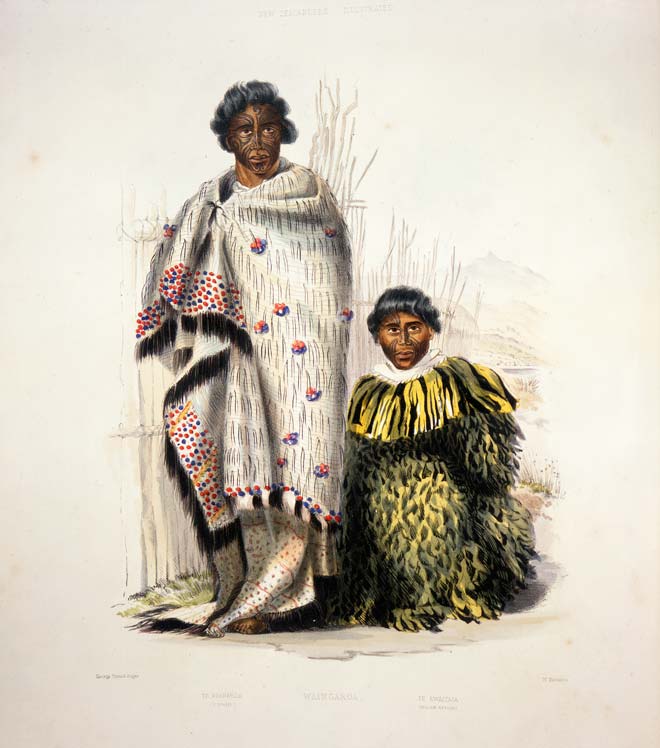
This 1847 lithograph of two Waikato chiefs, who were Christian converts, shows that designs of prestigious garments continued to evolve following the introduction of colourful European yarns. Te Moanaroa (left) wears two such cloaks. His outer garment is a korowai-ngore, woven of undyed muka (flax fibre) with black hukahuka (tassels) and fringing, and enhanced with eye-catching clusters of small woven pom-poms of coloured wool. It was further embellished with broad bands of golden-yellow, red and deep-blue woollen bobbles woven the entire length of each side-front. Beneath this he wears another cloak, similarly adorned with black fringing and additional rows of woollen insertions. The incorporation of coloured wool prior to the mid-19th century shows this chief’s status and reflects his interaction with European settlers.
In contrast, his companion Te Awa-i-taia wears a prestigious variety of traditional rain cloak called a mangaeka or tihetihe. This style was characterised by distinctive yellow hukahuka. These cloaks were made in only two regions – Whanganui and the Urewera. The yellow hukahuka apparently came from a special variety of flax grown near Lake Taupō. The blades of flax were split and lightly scraped with a shell before being heated in front of a mass of glowing embers. This heating caused the flax to turn a beautiful yellow colour. The exclusive nature of this material made it highly desirable and contributed to the prestige of such cloaks.
Using this item
Alexander Turnbull Library
Reference:
PUBL-0014-05
Tinted lithograph by George French Angas
Permission of the Alexander Turnbull Library, National Library of New Zealand, Te Puna Mātauranga o Aotearoa, must be obtained before any re-use of this image.









Add new comment